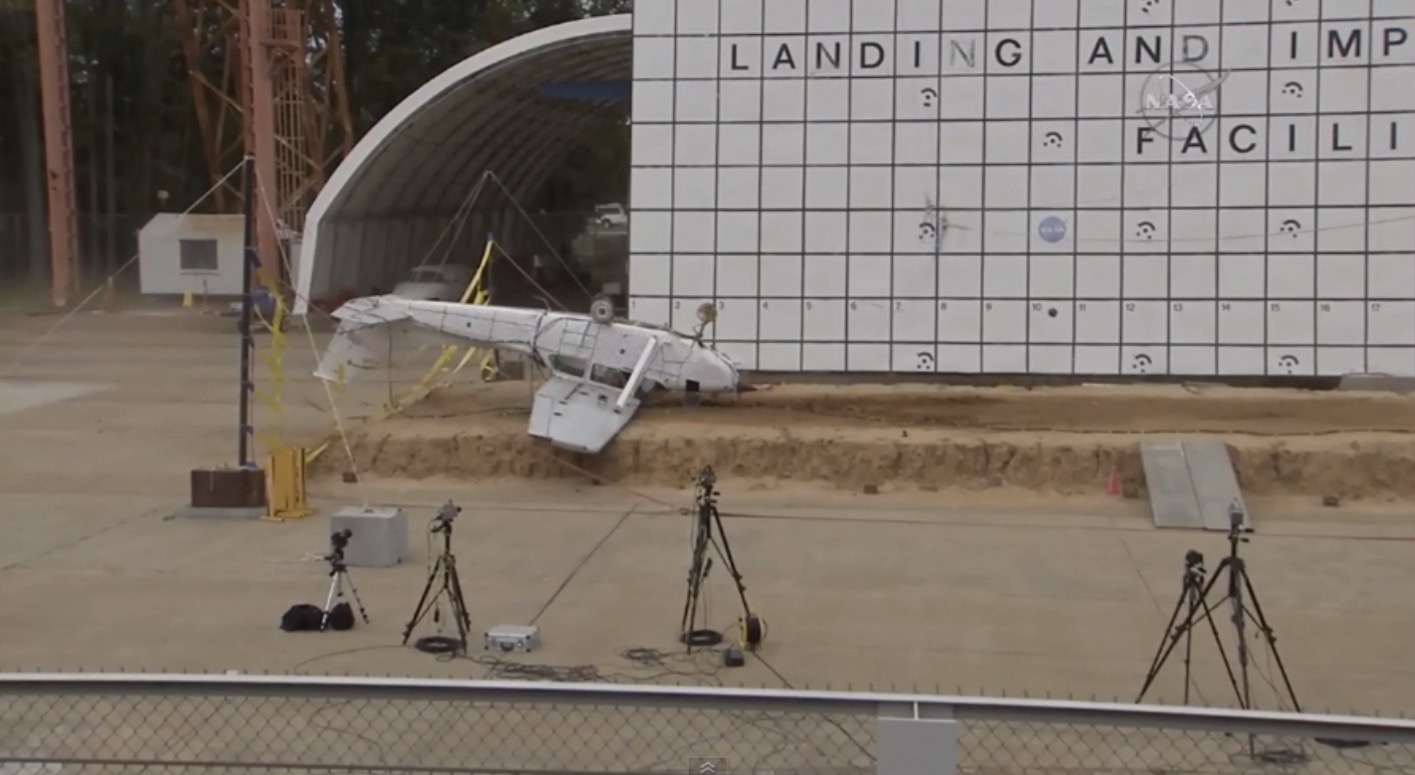
NASA sent a small airplane plummeting to Earth today (Aug. 26), for safety's sake.
Scientists and engineers at the space agency's Langley Research Center in Virginia dropped a Cessna 172 from a height of 100 feet (30 meters), in a crash test that was captured on video. The plane hit belly first, then flopped over onto its back in the dirt.
Two dummies were aboard the 1974 airplane, which was outfitted with a number of cameras and sensors, as well as five emergency locator transmitters (ELTs). ELTs send out signals that help rescue teams find commercial jetliners and other aircraft in the event of a crash. Current ELT models beam those signals up to satellites, which then relay the signals to ground stations, NASA officials said.
Today's drop simulated a survivable crash, NASA officials said. It was intended to help researchers test and improve ELT technology, and help them learn about the best ways to install the beacons. (ELTs are often seriously damaged in crashes, compromising rescue efforts.)
"ELTs have to work in the extreme circumstances involved in an airplane crash," NASA officials wrote in a statement previewing the crash. "Included in those extreme circumstances are the possibilities of excessive vibration, fire and impact damage. NASA research is designed to find practical ways to improve ELT system performance and robustness, giving rescue workers the best chance of saving lives."
Today's crash was the last of three such trials involving different Cessna 172 aircraft, all of which took place at Langley.
The first test occurred on July 1 and involved a drop of 80 feet (24 m) onto cement. Then, on July 29, researchers crashed a different plane onto dirt from a height of 100 feet (30 m).
Get the Space.com Newsletter
Breaking space news, the latest updates on rocket launches, skywatching events and more!
The ELT research is funded by the Search and Rescue Mission Office at NASA's Goddard Space Flight Center in Greenbelt, Maryland, agency officials said.
Follow Mike Wall on Twitter @michaeldwall and Google+. Follow us @Spacedotcom, Facebook or Google+. Originally published on Space.com.
Join our Space Forums to keep talking space on the latest missions, night sky and more! And if you have a news tip, correction or comment, let us know at: community@space.com.

Michael Wall is a Senior Space Writer with Space.com and joined the team in 2010. He primarily covers exoplanets, spaceflight and military space, but has been known to dabble in the space art beat. His book about the search for alien life, "Out There," was published on Nov. 13, 2018. Before becoming a science writer, Michael worked as a herpetologist and wildlife biologist. He has a Ph.D. in evolutionary biology from the University of Sydney, Australia, a bachelor's degree from the University of Arizona, and a graduate certificate in science writing from the University of California, Santa Cruz. To find out what his latest project is, you can follow Michael on Twitter.









